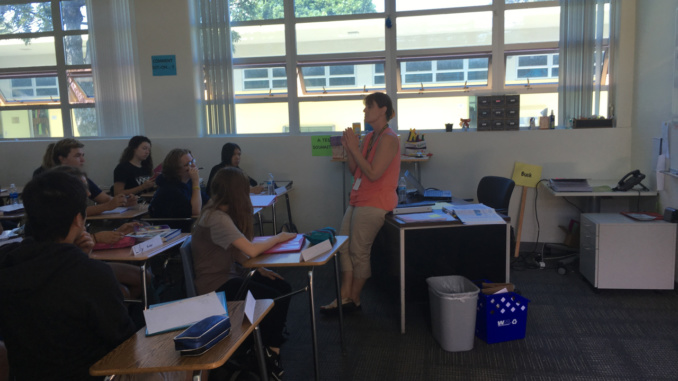
Mira Costa’s new teacher evaluation system addresses some shortcomings of the former structure, yet still requires further changes to ensure that the evaluations are as effective as possible.
On Sept. 30, the Manhattan Beach Unified School District Board of Trustees approved the new evaluation system, which was created by a committee of Costa administrators and teachers. Under the new system, the Costa administration will evaluate all temporary and probationary teachers, while tenured teachers have the option to volunteer for an evaluation.
According to Superintendent Dr. Michael Matthews a similar system was established in the Montgomery County school district in Maryland. It proved effective in its ability to identify specific areas that teachers need to improve on, thereby increasing subject rigor and teaching quality in the classroom.
According to Matthews, there were no definitive values of what good teaching is supposed to be within the old system. The lack of feedback from administrators posed a problem to teachers who were unsure of what they needed to improve on or how to go about doing so. This ambiguity is addressed by the new system’s more structured methodology, providing teachers with concrete avenues for improvement and success.
The new system contains six different standards for teachers to be assessed on. According to Costa history teacher Adam Gezci, a teacher must meet minimum quota of elements within four standards during the evaluation. The teacher and the administration each choose one category of the fist four, while, the fifth and sixth standards are mandatory. According to Matthews all standards and elements can be marked either good or bad during the time evaluators are observing faculty members.
While the new system will ultimately result in more thorough, uniform evaluations, generality of the newly established guidelines could lead to large variations in interpretation. Costa French teacher Timothy Hirsch believes there is a lack of knowledge among teachers regarding the new system. This is a common theme for many new teachers, proving to be a fault in a system that is meant to be collaborative.This is one area in the system that warrants attention and should be quickly addressed.
In order to resolve possible issues, a committee comprised of Costa department heads, or department representatives, and Costa administrators should collectively develop specificity within each set of guidelines. While following established national guidelines is a good start, developing clear-cut ideals that address Costa’s individualized aspirations will decrease subjectivity in evaluations that more effectively pertain to Costa’s needs.
The new teacher evaluation system’s clear guidelines and core propositions are an improvement over the old system but could use some refinement. While this is a positive change for Costa, further changes need to be made to the old system to decrease the possibility of ambiguity. Not only will this helps to improve the skills and teaching styles of instructors in the classroom, but it will help administrators give evaluations with accurate and constructive feedback.




Leave a Reply